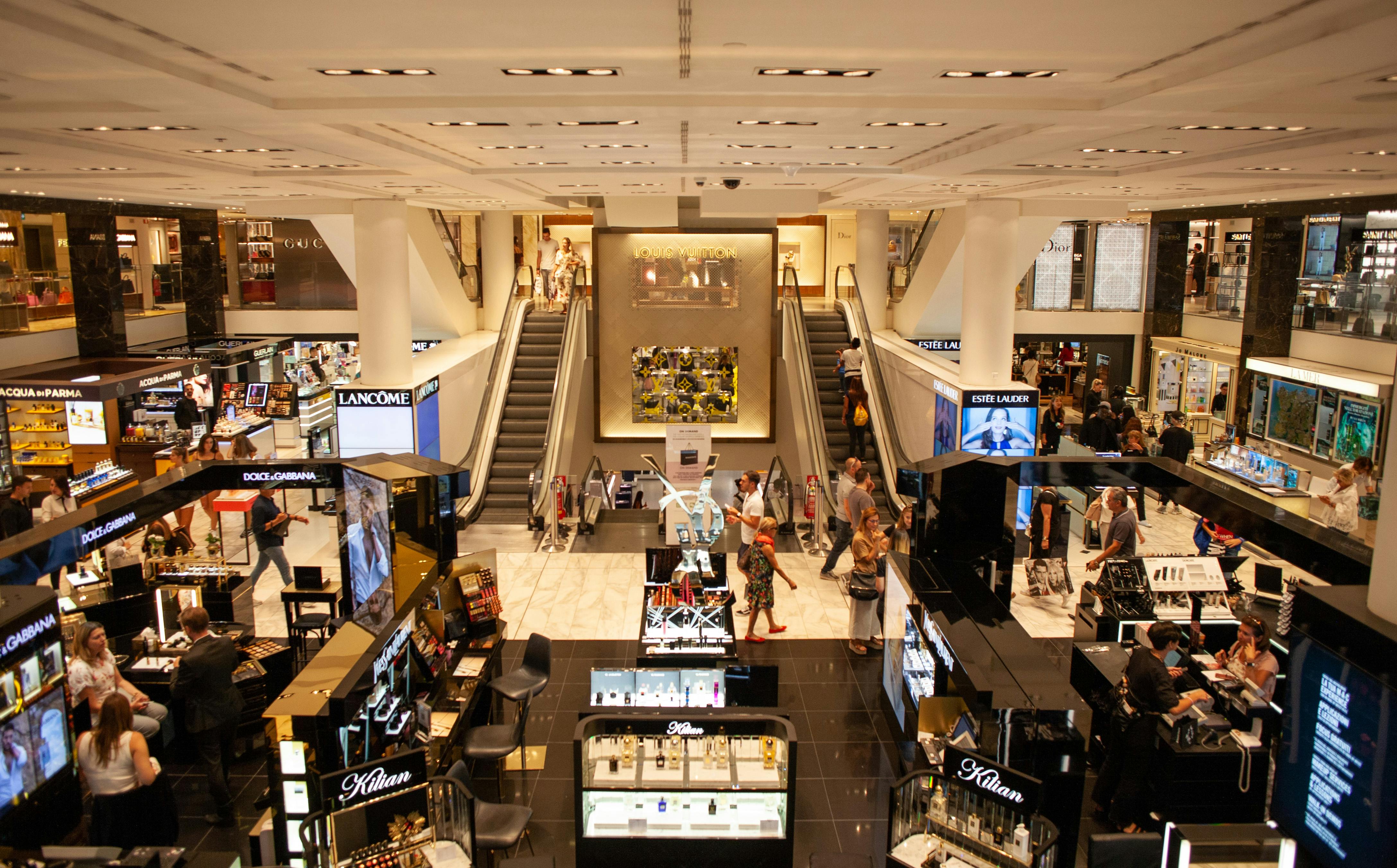Ready to turn insight into action?
We help organisations transform ideas into measurable results with strategies that work in the real world. Let’s talk about how we can solve your most complex supply chain challenges.

Lease vs Own-Operate BOH: Hybrid watchouts and five practical steps to de-risk your asset
Hybrid back-of-house (BOH) is now the default in many Australian and New Zealand precincts, integrated resorts, stadiums and retail centres. Landlords run some venues themselves—banquet kitchens, flagship bars, events—while also leasing adjacent spaces to third-party operators. On paper, it’s a smart portfolio move: you keep direct control of “hero” experiences while benefiting from the variety and rent profile of specialist tenants. In practice, placing two different operating logics on the same BOH spine introduces avoidable risk—especially if the asset was designed for one model and now runs both.
This article reframes BOH design and operations through a risk lens. First, we define the two end-states—Own & Operate and Lease—and why they produce different BOH requirements. Then we explore the unique watchouts that appear when you combine them in a hybrid model. Finally, we give you five practical steps to de-risk the asset without building a full central warehouse or drowning the site in administration.

Two BOH logics that don’t naturally mix
When you own and operate your venues, you typically aim to reduce total cost to serve, protect cold chain and HACCP end-to-end, and smooth the load on docks and lifts. You standardise packaging and cage sizes, you can consolidate deliveries through a central store, and you tune appointment rules and lift recall logic around your own rhythm.
When you lease space to other parties, your role shifts. You must provide a fair, safe and auditable shared BOH utility for many independent businesses. You can and should set rules—delivery windows, short-dwell expectations, equipment specifications, waste protocols—but you don’t control tenant ordering rhythm, supplier selections or inventory policy. That means more suppliers, more vehicle types, smaller drops and more diary conflicts. In that model, the BOH answer is usually more bays and more staging capacity, tighter appointment discipline, and a modest set of shared logistics features rather than a full central store.
A hybrid asset asks your dock, corridors and service lifts to do both jobs simultaneously. If the governance, geometry and data aren’t aligned, you’ll feel it at the worst possible moments: pre-lunch, pre-event, school-holiday peaks and late-night turnovers.
The watchouts in hybrid BOH models
Blurred HACCP responsibilities
In-house teams assume one standard. Tenants arrive with a dozen versions of “good enough”. If the landlord doesn’t define exactly what is inspected at the shared spine—temperature spot-checks, segregation at receipt, allergen handling, quarantine—it becomes no one’s job. The result is more disputes, more rework touches, and eventual regulatory heat.
What to look for: Warm corridors; propped chiller doors; staff unsure who owns a temperature failure; deliveries mixing ambient and chilled in the same cage; lack of hand-wash stations at the receiving face.
Cold chain drift in the last 100 metres
It’s rarely the truck. It’s the gap between the dock and the venue. Tenants tend to bring smaller, more frequent drops; in-house logistics may be optimised but they’re still queueing for shared lifts. Every extra minute with a door open, every double-back around a blocked corridor, erodes product temperature and shelf life.
What to look for: Spoilage claims after warm days; rising QA exceptions during event peaks; lack of insulated totes for micro-tenants; long routes from dock to cold rooms.
Dock congestion from supplier and vehicle proliferation
Owner-operated consolidation reduces inbound movements. Tenants expand the supplier base and vehicle mix, which increases diary friction and dwell. Without enforceable slot rules and a working meter, couriers and rigids pile up, and “first in, first served” replaces fairness and safety.
What to look for: Single queue for vastly different vehicles; no courier lane; security arbitrating who goes next; frequent overruns of appointment windows without clear consequences.
Traffic and neighbour exposure
A hybrid asset serves multiple rhythms and can easily breach local curfews or irritate residential neighbours. Out-of-hours access, acoustic treatments and kerb management become as important as raw bay throughput.
What to look for: Noise complaints, trucks idling on local streets, kerbside fines, regular clashes with waste collections or bus lanes.
Corridor and lift bottlenecks
Two peak curves collide: tenant pre-open top-ups and in-house surge windows for events or banquets. Shared lifts without priority logic force staging in corridors, loud movements in guest areas and occasional FOH shortcuts.
What to look for: Cages parked in hallways; frequent lift lock-outs; scuffed corners and rub-rails; cleaners shadowing logistics crews to clear debris.
Stock control and dispute fog
In-house stock is trackable; tenant stock is visible only at touchpoints. Without evidence at those touchpoints—ePOD with photos on exception, CCTV with the right angles, pass logs for access—loss and damage disputes turn into relationship damage.
What to look for: “Missing on arrival” claims; long email chains instead of quick video checks; keys or passes shared informally.
FOH delivery creep
Once FOH runs are tolerated “just this once”, they become standard. Guests notice. So do insurance assessors when something goes wrong.
What to look for: Deliveries through public lifts during soft-open periods; kegs and crates in guest sightlines; apologies replacing controls.
Waste contamination and charge-back friction
Shared waste rooms are easy to mis-use. Without stream-level measurement and rules with teeth, costs and complaints rise together.
What to look for: Cardboard in organics; oil spills; bins overflowing after events; monthly arguments about charges without data to resolve them.
Security: too many people, too few controls
Hybrid assets multiply contractors, casuals and couriers. Over-permissive access becomes the path of least resistance.
What to look for: Visitor stickers standing in for badges; expired passes working; blind corners without mirrors; near-miss reports increasing.
Cost-to-serve opacity
If you can’t measure dwell, slot adherence, lift waits and waste by stream, you can’t allocate cost or change behaviour. Disputes become political.
What to look for: Manually compiled spreadsheets as “evidence”; complaints about fairness; reluctance to honour penalties or fees.

Five practical steps to de-risk a hybrid BOH—without over-engineering
These steps are deliberately simple and fast to execute. You’re not building a central DC; you’re building a measured, segmented and lightly supported spine that works for both models.
Step 1: Map and meter the spine
Start with measurement. If it moves, time it. If it dwells, log it. If people argue about it, put a sensor or a camera on it.
- Switch on a yard management system for appointments, arrival capture and dwell. Automatic number-plate recognition and driver check-in kiosks keep it honest.
- Instrument lifts and key corridors so you can see call, wait and ride times in the peaks that hurt. If your building system can’t deliver, add simple IoT counters.
- Capture acceptance at the dock with ePOD. Build in randomised temperature spot-checks for chilled deliveries and a photo on exception.
- Add weights or sensors to waste streams where you charge back to tenants.
- Publish a monthly BOH dashboard in plain English. Share turns per hour, dwell distributions, slot adherence trends, lift waits by timeband, receipt exceptions and waste contamination. Keep names out; keep behaviours in.
The outcome is powerfully boring: clean facts that defuse arguments and let you explain changes before you enforce them.
Step 2: Segment the asset and set capacity rules
Equity beats improvisation. Zoning and time-banding remove collisions and set expectations without favouring any single operator.
- Define clear delivery zones and tenant categories—Food & Beverage, Fashion/General Retail, Event Operations, Couriers—based on how they actually use the spine.
- Publish timebands—pre-open, post-close, daytime—and set caps per zone and timeband according to what your meter shows the asset can sustain.
- Enforce slot logic with realistic grace windows and automatic penalties or credits through the YMS. Make the appeal process transparent and time-boxed.
- Allocate freight-lift windows by zone. Reserve priority recall windows for in-house surges, and signal those windows early so tenants can plan around them.
- Prohibit FOH deliveries except through a short, defined emergency protocol. Teach teams to treat FOH as clinical last resort, not convenience.
When capacity and priority are known, disputes shift from who shouts loudest to who planned best.
Step 3: Stand up a light shared logistics layer
You don’t need a full central store to reduce hybrid risk. You need just enough infrastructure to de-risk the last 100 metres and stop the dock from jamming.
- Install a small chilled “pause room” at the dock so chilled items can sit for minutes, not melt for hours, while teams clear routes and lifts.
- Designate a courier lane and create a small inspection or quarantine bay. Keep parcels and disputes out of the main line.
- Mandate standard cage and tote specifications suited to your lifts and corridors—low-noise wheels, maximum heights, insulated totes for chilled micro-tenants.
- Offer an optional neutral cage-delivery service for micro-tenants who struggle with compliance. Make it opt-in, priced on cost recovery and available to all equally.
This layer solves three hybrid problems at once: cold-chain drift, dock congestion and fairness.
Step 4: Codify, induct and enforce
A good tenancy manual is necessary but not sufficient. The rules have to live on the floor.
- Update your BOH manual so it reads like a field guide, not a legal annex. Spell out delivery windows and caps, appointment rules, equipment specs, short-dwell limits, lift etiquette, FOH prohibitions, waste protocols and how induction works.
- Make induction visible and repeatable. Use driver kiosks for passes, run escorted first visits and provide PPE vending so no one can say they couldn’t comply.
- Put timers on bays, display dwell warnings and apply penalties automatically through the YMS. Avoid one-off exceptions; patterns matter more than stories.
- Hold a monthly BOH forum. Present the dashboard, listen to friction points and adjust caps or timebands if the evidence supports it.
Behaviour changes when expectations are clear, consequences are consistent and the process feels fair.
Step 5: Pilot, learn and scale in eight weeks
Prove it quickly, then scale it deliberately.
- Pick one zone or one dock in a lively period. Tighten slot rules, turn on telemetry, open the chilled pause room, enforce short-dwell and run escorted first-visit inductions.
- Publish weekly snapshots to the stakeholders who are feeling it: turns per hour, dwell, lift waits, FOH breaches, receipt exceptions.
- When the numbers stabilise, lock the gains and extend the approach across zones.
- Use the improvements to justify structural tweaks—an extra bay, a re-striped apron, stronger corner protection, lift logic upgrades or a second freight car where the business case stacks up.
Pilots make change concrete. They build trust and provide the evidence Boards need to invest where it counts.
What good looks like in a hybrid asset
You’ll know the system is working when the peaks feel predictable and the complaints change tone. P90 dwell times fall into the planned range and hold during events. FOH breaches fade to rare, documented exceptions. Temperature spot-checks fail less often in the hot months. Lift waits stop spiking at breakfast and pre-dinner peaks. Waste contamination drops, and charge-backs are accepted without a monthly debate. Disputes migrate from emotion to evidence; meetings move from adjudication to improvement. Tenant sentiment improves because the rules feel fair and the outcomes are visible.
Do you really need a central store in a hybrid model?
Not usually. In a fully owner-operated asset with heavy F&B, a central store is a strong lever for cost-to-serve and HACCP. In a hybrid asset the economics shift. A light shared logistics layer—chilled pause room, courier lane, quarantine bay, standard cages, lift windowing—does most of the risk reduction. Add an optional neutral cage-delivery service only for micro-tenants who genuinely can’t meet the standard, and keep it opt-in and non-discriminatory.
Addressing common objections
“Penalties will sour tenant relationships.”
Penalties without measurement will. Penalties with a clear meter, sensible grace windows and a transparent appeal path create respect and drive the right behaviour. The key is to automate them and publish the numbers.
“We can’t afford telemetry.”
You can’t afford the disputes you will otherwise have. A practical YMS and a handful of counters cost less than one month of congestion or a single HACCP incident. Start small and expand.
“Our asset is different.”
Every asset is different. The five steps are deliberately generic because they’re the pre-requisites for any tailored solution. Measurement, segmentation, light logistics, enforceable rules and a pilot are universally useful. What you build on top is bespoke.
“Tenants won’t use insulated totes or low-noise wheels.”
Make it a condition of access and provide a simple approved list. Pair the rule with practical support—where to buy, how to set up—and you will get compliance.
How Trace Consultants can help
Trace Consultants works with Australian and New Zealand asset owners to design and operationalise BOH models that balance fairness and throughput. We help you:
- Baseline your risk with a quick-start measurement pack—yard appointments, dwell and lift waits, receipt exceptions and waste streams—so you can see what’s really happening and where the peaks collide.
- Design the operating model for hybrid reality—zoning, timebands and caps by category; courier lanes; chilled pause rooms; quarantine spaces; lift windowing and priority recall that protect both tenant equity and in-house surges.
- Codify rules that live on the floor, not just in leases—field-ready BOH manuals, driver induction flows, signage and enforcement settings inside your YMS.
- Pilot and scale in eight-week cycles—prove the improvement, publish the gains, then prepare the board-ready business case for targeted capex where it pays back.
- Sustain performance with dashboards, scorecards, supplier and tenant forums, and a cadence of HACCP and safety audits that keep the spine honest.
We won’t make up case studies or push a warehouse you don’t need. Our approach is evidence-led and designed to fit the geometry, neighbours and mix of your specific asset.
Bringing it all together
Hybrid BOH is a design choice, not an accident. It can be your competitive advantage if you acknowledge that Own & Operate and Lease are different games, and you build a spine that supports both. The risks are predictable—HACCP gaps, cold-chain drift, dock and lift congestion, supplier and vehicle proliferation, FOH creep, waste contamination, security slippage and cost disputes. The fixes are practical:
- Map and meter the spine so arguments become evidence.
- Segment and cap capacity with fair rules and real consequences.
- Install light shared logistics to protect cold chain and keep the dock moving.
- Codify, induct and enforce so the rules exist where the work happens.
- Pilot, learn and scale in eight weeks to lock in gains and fund what matters.
Do those five things and the BOH will become what it should be: the quiet advantage behind every great guest experience. If you’d like a one-page risk register and control matrix tailored to your asset—and a realistic plan to land it—Trace Consultants can help you get there, step by step.
Ready to turn insight into action?
We help organisations transform ideas into measurable results with strategies that work in the real world. Let’s talk about how we can solve your most complex supply chain challenges.







